Registrations
We now manually approve all new user accounts due to a large influx of spam bots. Accounts are normally approved within 48 hours.
If you need any help with using this Wiki, please ask here: TalkFord.com Wiki Submission Forum
Difference between revisions of "IMRC - How to Fix"
Andymac1977 (Talk | contribs) (→Problems) |
|||
| (11 intermediate revisions by 2 users not shown) | |||
| Line 1: | Line 1: | ||
| + | {{note|'''The Ford Mondeo hit our roads in 1993, and has consistently been a sales success. Now on its 4th incarnation, it remains a drivers favourite.'''<br> | ||
| + | '''For more information, visit the [http://www.talkford.com/forum/596-mondeo/ Ford Mondeo] forum on [http://www.talkford.com TalkFord.com], the definitive resource site covering all Fords from the present day to the 1970's.'''}} | ||
| + | ---- | ||
| + | {{Infobox | ||
| + | |name = Infobox Template | ||
| + | |bodystyle = float:right; valign:top; | ||
| + | |image = [[File:Fordwiki infobox.png]] | ||
| + | |imagestyle = | ||
| + | |caption = Overview Guide | ||
| + | |captionstyle = | ||
| + | |headerstyle = background:#ccf; | ||
| + | |labelstyle = background:#ddf; | ||
| + | |datastyle = text-align:right; | ||
| + | |header1 = | ||
| + | |label1 = Ford Model: | ||
| + | |data1 = '''Mondeo''' | ||
| + | |header2 = | ||
| + | |label2 = Petrol/Diesel: | ||
| + | |data2 = '''???''' | ||
| + | |header3 = | ||
| + | |label3 = Estimated Cost: | ||
| + | |data3 = '''???''' | ||
| + | |header4 = | ||
| + | |label4 = Difficulty? | ||
| + | |data4 = '''???''' | ||
| + | |label5 = How long does this take? | ||
| + | |data5 = '''???''' | ||
| + | }} | ||
== Fix the IMRC == | == Fix the IMRC == | ||
| Line 6: | Line 34: | ||
=== Problems === | === Problems === | ||
| − | One of the problems with the V6 engine is the poor siting of the IMRC (Inlet Manifold Runner Control) under the black plastic cover(usually with Duratec V6 embossed on it) above the exhaust manifold. | + | One of the problems with the V6 engine is the poor siting of the IMRC (Inlet Manifold Runner Control) under the black plastic cover (usually with Duratec V6 embossed on it) above the exhaust manifold. |
| − | This means that all of the heat gets trapped under the cover and eventually cooks the PCB(Printed Circuit Board) inside the IMRC. Worst affected part seems to be the transistor on the PCB. However the PCB also suffers from Dry Joints where the heat damages the solder on the joints and the contact becomes intermittent. | + | This means that all of the heat gets trapped under the cover and eventually cooks the PCB (Printed Circuit Board) inside the IMRC. Worst affected part seems to be the transistor on the PCB. However the PCB also suffers from Dry Joints where the heat damages the solder on the joints and the contact becomes intermittent. |
Theses problems result in the Secondary Inlets not opening when they should, usually at Wide Open Throttle, however this does vary depending on the load etc on the engine. A fuller explanation is available elsewhere on these forums. | Theses problems result in the Secondary Inlets not opening when they should, usually at Wide Open Throttle, however this does vary depending on the load etc on the engine. A fuller explanation is available elsewhere on these forums. | ||
| Line 26: | Line 54: | ||
=== Equipment needed === | === Equipment needed === | ||
| − | Replacement Transistor (Cougar site recommends a Motorola TIP 121)- Google is your friend here! | + | Replacement Transistor (Cougar site recommends a Motorola TIP 121) - Google is your friend here!. |
| − | + | ||
| − | + | ||
| − | ADDED: I recommend to use "stronger" transistor. For example, I have used TIP132 (works fine). The original one there was 2N6045 (see http://www.datasheetcatalog.com/datasheets_pdf/2/N/6/0/2N6045.shtml). | + | ADDED: I recommend to use "stronger" transistor. For example, I have used TIP132 (works fine though is a 70w part). The original one there was a 75w 2N6045 (see http://www.datasheetcatalog.com/datasheets_pdf/2/N/6/0/2N6045.shtml). RS Components part 656-1791 is also an acceptable high-power (80w) replacement. |
| + | |||
| + | I would suggest you seek some more advice when selecting the correct Transistor and your local supplier could help with a suitable alternative. The main thing is to ensure that it is NPN (not PNP) and that it works in a high operating temperature range (although this is probably not as important if you are resiting the IMRC/PCB) | ||
| + | |||
| + | 8mm socket & driver | ||
| + | |||
| + | No. 1 Philips or Pozidrive screwdriver | ||
| + | |||
| + | Small terminal driver | ||
| + | |||
| + | Small mallet or hammer | ||
| + | |||
| + | Heat transfer compound (RS Components 554-311 works fine) | ||
| + | |||
| + | Soldering iron with fine / pointed tip & solder | ||
| + | |||
| + | 7/32 hex driver | ||
| + | |||
| + | Desoldering braid or desoldering tool (solder sucker!) | ||
=== Procedure === | === Procedure === | ||
| − | Unplug the harness from the IMRC and remove the top cover. | + | Unplug the harness from the IMRC and remove the top cover by removing the four cross head screws attaching the lid to the case then carefully inserting the terminal driver into the join and gently levering the lid off. The lid will be sealed with a compound similar to instant gasket so will (unless it's been opened before) be very difficult to pull apart by hand - the sealant is clearly visible on the lid in the picture below. |
[[Image:Imrc1.jpg]] | [[Image:Imrc1.jpg]] | ||
| + | |||
| + | The picture below shows the white grub screw on my PCB (which has been sprayed with PCB lacquer) as well as some brown shellac around the multiplug that connects the IMRC to the loom. | ||
[[Image:Imrc2.jpg]] | [[Image:Imrc2.jpg]] | ||
| − | |||
| − | |||
Remove the 5 Philips headed screws that hold the PCB inside the IMRC housing. There should be a small white plastic screw in the hole indicted by the 2 in a triangle stamped on the board - this can be removed with a 7/32 hex bit. This is to hold the transistor tight against the IMRC housing (which doubles as a heatsink) to ensure good thermal conductivity. Obviously this does not work very well because the housing suffers heat soak due to its location directly above the engine. | Remove the 5 Philips headed screws that hold the PCB inside the IMRC housing. There should be a small white plastic screw in the hole indicted by the 2 in a triangle stamped on the board - this can be removed with a 7/32 hex bit. This is to hold the transistor tight against the IMRC housing (which doubles as a heatsink) to ensure good thermal conductivity. Obviously this does not work very well because the housing suffers heat soak due to its location directly above the engine. | ||
| Line 70: | Line 114: | ||
| − | '''Method 2 (Quick and not really that | + | '''Method 2 (Quick and not really that dirty) :''' |
Using a fine pair of cutters (of the variety suitable for pcb work) chop the legs of the original transistor a couple of mm after the 90 deg bend (so part of the original legs, including the bend, remain attached to the PCB). Put the old transistor alongside the new and trim the new transistors legs so that they are a mm or so longer than the originals. Put the new transistor in place of the old, you should find that the new legs line up perfectly with the old and there is an overlap of about 2mm. Simply solder the new legs to the old - this should take only a few seconds to achieve and makes lining up the new transistor far easier. | Using a fine pair of cutters (of the variety suitable for pcb work) chop the legs of the original transistor a couple of mm after the 90 deg bend (so part of the original legs, including the bend, remain attached to the PCB). Put the old transistor alongside the new and trim the new transistors legs so that they are a mm or so longer than the originals. Put the new transistor in place of the old, you should find that the new legs line up perfectly with the old and there is an overlap of about 2mm. Simply solder the new legs to the old - this should take only a few seconds to achieve and makes lining up the new transistor far easier. | ||
| Line 84: | Line 128: | ||
== Suggestion == | == Suggestion == | ||
| − | While you are ferreting around under the bonnet | + | While you are ferreting around under the bonnet I'd suggest that you have a very close look at the Fuel Injection Wiring Harness as this may well be causing most of your driving problems. The under bonnet harnesses on the Mk2 Mondeo are a DISGRACE!!! The USA version of this car was subject to a MAJOR recall to have underbonnet wiring replaced Free of Charge and the warranty extended to 10 years. THIS DID NOT HAPPEN ON THE UK/EUROPEAN MONDEO. |
| − | It may also explain some of the poor shifting problems on the auto equipped cars as the main harness that services the Auto Transmission is also suspect | + | It may also explain some of the poor shifting problems on the auto equipped cars as the main harness that services the Auto Transmission is also suspect - not quite as bad but still obvious signs of heat damage |
| − | Oh and | + | Oh and don't bother looking for new replacement harnesses - they are OBSOLETE!!!!! |
| − | Here are some pictures from under the bonnet of my | + | Here are some pictures from under the bonnet of my car they may also help anyone doing an Upper Inlet Manifold (UIM) Lower Inlet Manifold (LIM) clean. There is already an outline of how to do this on the site but I think it needs pictures added - feel free to use any of these whoever owns the writeup. |
Wires to the IMRC with plug cut off | Wires to the IMRC with plug cut off | ||
| Line 96: | Line 140: | ||
[[Image:Imrc5.jpg]] | [[Image:Imrc5.jpg]] | ||
| − | Throttle Position Sensor | + | Throttle Position Sensor Plug see damaged wires - far worse once outer wrapping removed |
[[Image:Imrc6.jpg]] | [[Image:Imrc6.jpg]] | ||
| − | Wires to IMRC once they were | + | Wires to IMRC once they were undressed |
[[Image:Imrc7.jpg]] | [[Image:Imrc7.jpg]] | ||
| Line 108: | Line 152: | ||
[[Image:Imrc8.jpg]] | [[Image:Imrc8.jpg]] | ||
| − | More views of faulty wiring | + | More views of faulty wiring - look at the state of the heat damaged wires under the handle of the Stanley Knife!! |
[[Image:Imrc9.jpg]] | [[Image:Imrc9.jpg]] | ||
| Line 124: | Line 168: | ||
[[Image:Imrc12.jpg]] | [[Image:Imrc12.jpg]] | ||
| − | |||
| − | [[Category: | + | [[Category:Mondeo_Mk1]] |
| − | [[Category: | + | [[Category:Mondeo_Mk2]] |
| − | [[Category: | + | [[Category:Mondeo_Mk3]] |
| − | + | ||
Latest revision as of 20:14, 20 February 2011
For more information, visit the Ford Mondeo forum on TalkFord.com, the definitive resource site covering all Fords from the present day to the 1970's.
|
Overview Guide | |
| Ford Model: | Mondeo |
|---|---|
| Petrol/Diesel: | ??? |
| Estimated Cost: | ??? |
| Difficulty? | ??? |
| How long does this take? | ??? |
Contents
Fix the IMRC
Identification
The car has lost its power by higher rpm - from approx. 3500 rpm. First, the car loses power in several impulses, feeling you drive through splash. Afterward the power is lost...
Problems
One of the problems with the V6 engine is the poor siting of the IMRC (Inlet Manifold Runner Control) under the black plastic cover (usually with Duratec V6 embossed on it) above the exhaust manifold.
This means that all of the heat gets trapped under the cover and eventually cooks the PCB (Printed Circuit Board) inside the IMRC. Worst affected part seems to be the transistor on the PCB. However the PCB also suffers from Dry Joints where the heat damages the solder on the joints and the contact becomes intermittent.
Theses problems result in the Secondary Inlets not opening when they should, usually at Wide Open Throttle, however this does vary depending on the load etc on the engine. A fuller explanation is available elsewhere on these forums.
ADDED: It depends only on rpm - you can see it also by manually opening throttle direct on the motor (rev the car) under the throttle.
The solution to these problems are:
1. Replace the faulty transistor with one that works better under the hot conditions
2. Resolder any Dry Joint - Usually evidenced by discolouration around the soldered connection of the various components on the board. The are best seen using a magnifying glass
3. Re-site the IMRC (or alternatively just the PCB) in another location where it is not as hot.
This fix outlines the steps to address problems 1 & 2.
Equipment needed
Replacement Transistor (Cougar site recommends a Motorola TIP 121) - Google is your friend here!.
ADDED: I recommend to use "stronger" transistor. For example, I have used TIP132 (works fine though is a 70w part). The original one there was a 75w 2N6045 (see http://www.datasheetcatalog.com/datasheets_pdf/2/N/6/0/2N6045.shtml). RS Components part 656-1791 is also an acceptable high-power (80w) replacement.
I would suggest you seek some more advice when selecting the correct Transistor and your local supplier could help with a suitable alternative. The main thing is to ensure that it is NPN (not PNP) and that it works in a high operating temperature range (although this is probably not as important if you are resiting the IMRC/PCB)
8mm socket & driver
No. 1 Philips or Pozidrive screwdriver
Small terminal driver
Small mallet or hammer
Heat transfer compound (RS Components 554-311 works fine)
Soldering iron with fine / pointed tip & solder
7/32 hex driver
Desoldering braid or desoldering tool (solder sucker!)
Procedure
Unplug the harness from the IMRC and remove the top cover by removing the four cross head screws attaching the lid to the case then carefully inserting the terminal driver into the join and gently levering the lid off. The lid will be sealed with a compound similar to instant gasket so will (unless it's been opened before) be very difficult to pull apart by hand - the sealant is clearly visible on the lid in the picture below.
The picture below shows the white grub screw on my PCB (which has been sprayed with PCB lacquer) as well as some brown shellac around the multiplug that connects the IMRC to the loom.
Remove the 5 Philips headed screws that hold the PCB inside the IMRC housing. There should be a small white plastic screw in the hole indicted by the 2 in a triangle stamped on the board - this can be removed with a 7/32 hex bit. This is to hold the transistor tight against the IMRC housing (which doubles as a heatsink) to ensure good thermal conductivity. Obviously this does not work very well because the housing suffers heat soak due to its location directly above the engine.
NOTE: You can replace the plastic screw with metallic one. I have used a screw designed for my harddisk with flat head. If there is no screw present you are advised to fit one to ensure a good contact between the heatsink and transistor.
The PCB may now come free with a gentle pull on the plug. However more likely the PCB and plug has been sprayed with Shellac ( a sort of brown glue) that holds the plug in the housing and makes it a PITA to remove. I removed mine by unbolting the IMRC housing, turning it over (it turns easily on the cable) and then placing a small wooden block against the plastic plug and tapping it GENTLY(and I do mean GENTLY as this plug will be heat damaged and brittle).
Alternatively, you may use a terminal driver to very carefully chisel away the shellac from the connector. Angle the screwdriver flat with the metal housing and gently tap it under the shellac with a very small hamer (or in my case, the handle of a larger screwdriver) - wiggling it every so often to free it from the housing. Once the shellac has begun to peel away you may be able to remove the bulk of it by pulling it off with a small pair of pliers - do this gently but firmly with no sharp tugs. Once you have the majority of the shellac off, you may find there is enough room to insert a small flat bladed screwdriver between the connector and the housing and, very gently lever the connector out.
It should then look like this.
The Transistor is the oblong thing with 3 legs on the upper edge of the PCB that looks like it has chewing gum stuck on it. This is Thermal Paste intended to make the transfer of heat to the alloy IMRC case. Actually works well in reverse!! You can see where it contact the square post inside the IMRC. In some instances, there is too little thermal paste applied at factory -
Method 1 :
Desolder and remove the old transistor. Hold the new an dold transistors back to back and bend the legs of the new transistor at the same location as the old transistors legs are bent - this will help line up the transistor with teh screw hole. Install the new one making sure that it is correctly oriented (flat side without the identification marks facinng away from the PCB). Line the hole up with the one in the PCB - this should be perfect if you used the original transistor as a template.
This picture is from the Cougar website as I did not have a photo of this bit.
Back of PCB showing new transistor in place - the yellow cable is not there for anything other than to help align things.
Turn PCB over and cut off any transistor pins that stick out too far. Now is the time to have a look for any other soldered joints that might be Dry and give them a quick zap with the soldering iron to restore the connection.
Method 2 (Quick and not really that dirty) :
Using a fine pair of cutters (of the variety suitable for pcb work) chop the legs of the original transistor a couple of mm after the 90 deg bend (so part of the original legs, including the bend, remain attached to the PCB). Put the old transistor alongside the new and trim the new transistors legs so that they are a mm or so longer than the originals. Put the new transistor in place of the old, you should find that the new legs line up perfectly with the old and there is an overlap of about 2mm. Simply solder the new legs to the old - this should take only a few seconds to achieve and makes lining up the new transistor far easier.
Job Done! You can now move on to either reinstalling the PCB in the IMRC box or move on to resiting it elsewhere. Somebody else can run you thru this.
Checking Operation :
To check the IMRC is working, replace the cover on the IMRC (not doing so may result in injury and damage ot the IMRC) then start the engine, allow it to warm up a little then slowly rev the engine. As revs get towards 3,700RPM you should see the secondary inlet lever operate (down under the Throttle Body).
You can also check to make sure the mechanical cable works by just bridging to the round IMRC motor from the battery. As the power goes on it will cause the motor to turn , rotate the gears and pull the secondary release cable to open the butterflies. Be very careful if doing this as the motor can jump out of its home even with you holding it down - if you get your fingers stuck in the gear mechanism it may cause permanent injury to your hands.
Suggestion
While you are ferreting around under the bonnet I'd suggest that you have a very close look at the Fuel Injection Wiring Harness as this may well be causing most of your driving problems. The under bonnet harnesses on the Mk2 Mondeo are a DISGRACE!!! The USA version of this car was subject to a MAJOR recall to have underbonnet wiring replaced Free of Charge and the warranty extended to 10 years. THIS DID NOT HAPPEN ON THE UK/EUROPEAN MONDEO.
It may also explain some of the poor shifting problems on the auto equipped cars as the main harness that services the Auto Transmission is also suspect - not quite as bad but still obvious signs of heat damage
Oh and don't bother looking for new replacement harnesses - they are OBSOLETE!!!!!
Here are some pictures from under the bonnet of my car they may also help anyone doing an Upper Inlet Manifold (UIM) Lower Inlet Manifold (LIM) clean. There is already an outline of how to do this on the site but I think it needs pictures added - feel free to use any of these whoever owns the writeup.
Wires to the IMRC with plug cut off
Throttle Position Sensor Plug see damaged wires - far worse once outer wrapping removed
Wires to IMRC once they were undressed
LIM (UIM removed) showing Fuel Injector Harness (which also carries TPS/IMRC connections in the same loom)
More views of faulty wiring - look at the state of the heat damaged wires under the handle of the Stanley Knife!!
Heres one of the IMRC, cover off PCB removed and the wires with the plug removed. Its easy to turn the IMRC housing over (it rotates on the cable) and then tap out the plug if necessary
Close-ups of the IMRC wires
Another Close Up of IMRC Wires
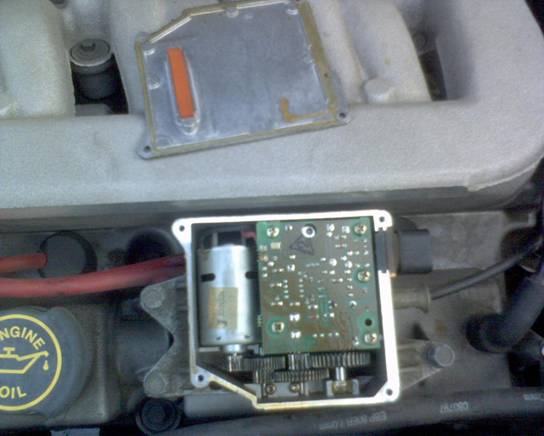
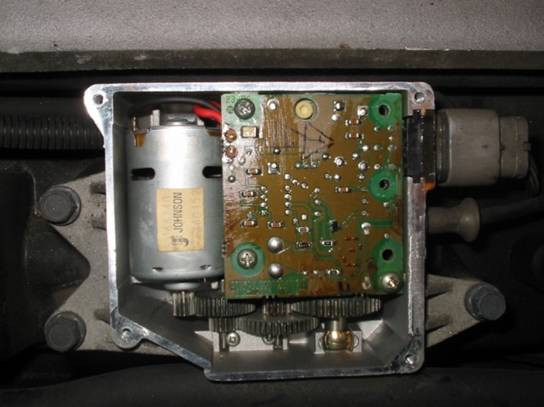
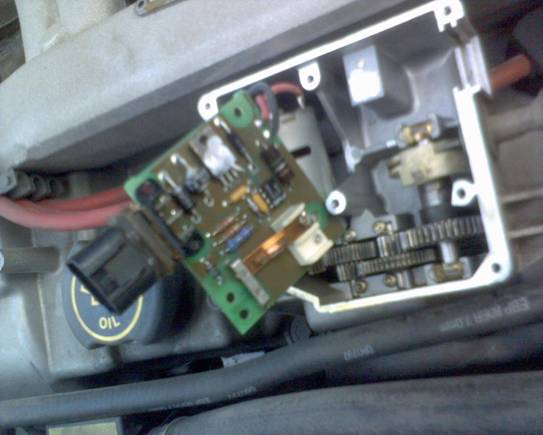
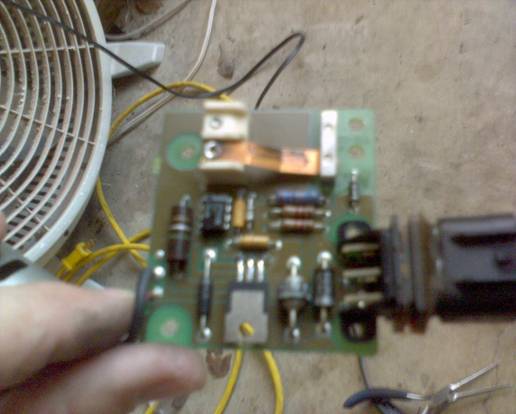
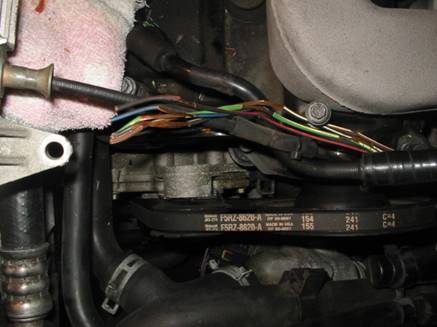
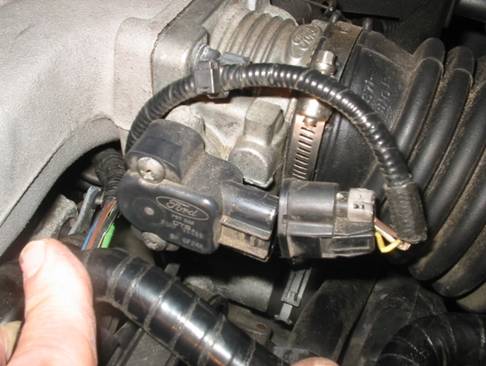
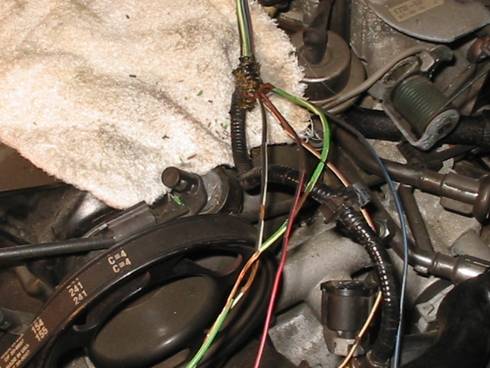
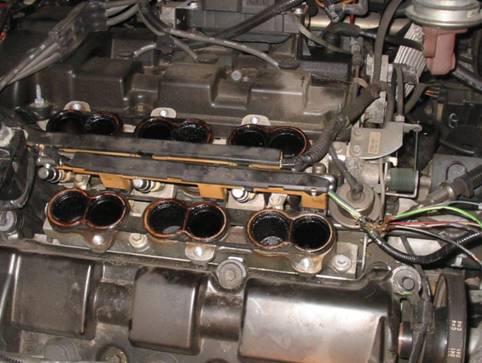
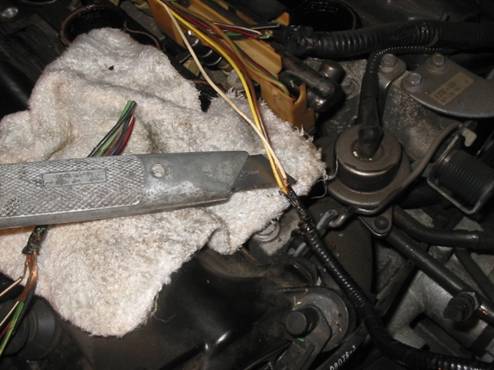
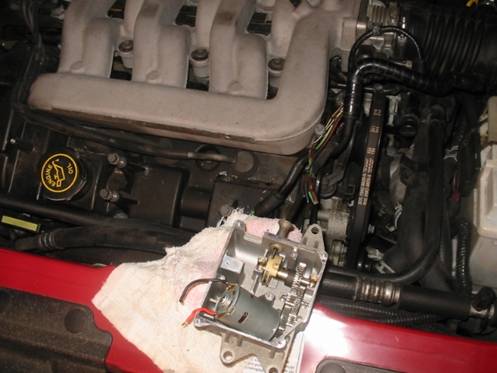
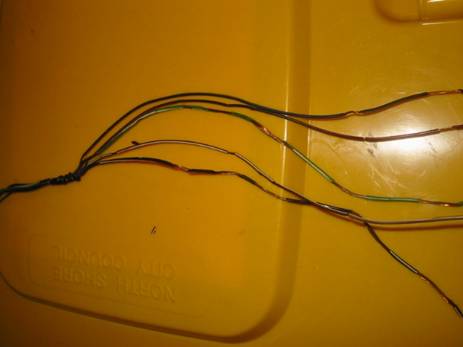
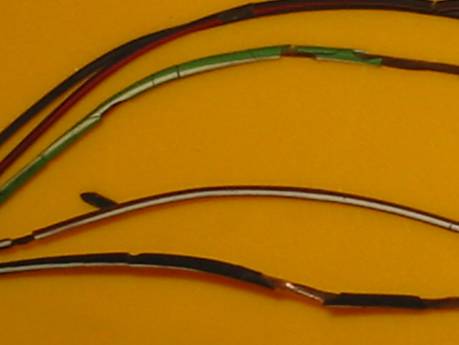
 Your Privacy Choices
Your Privacy Choices